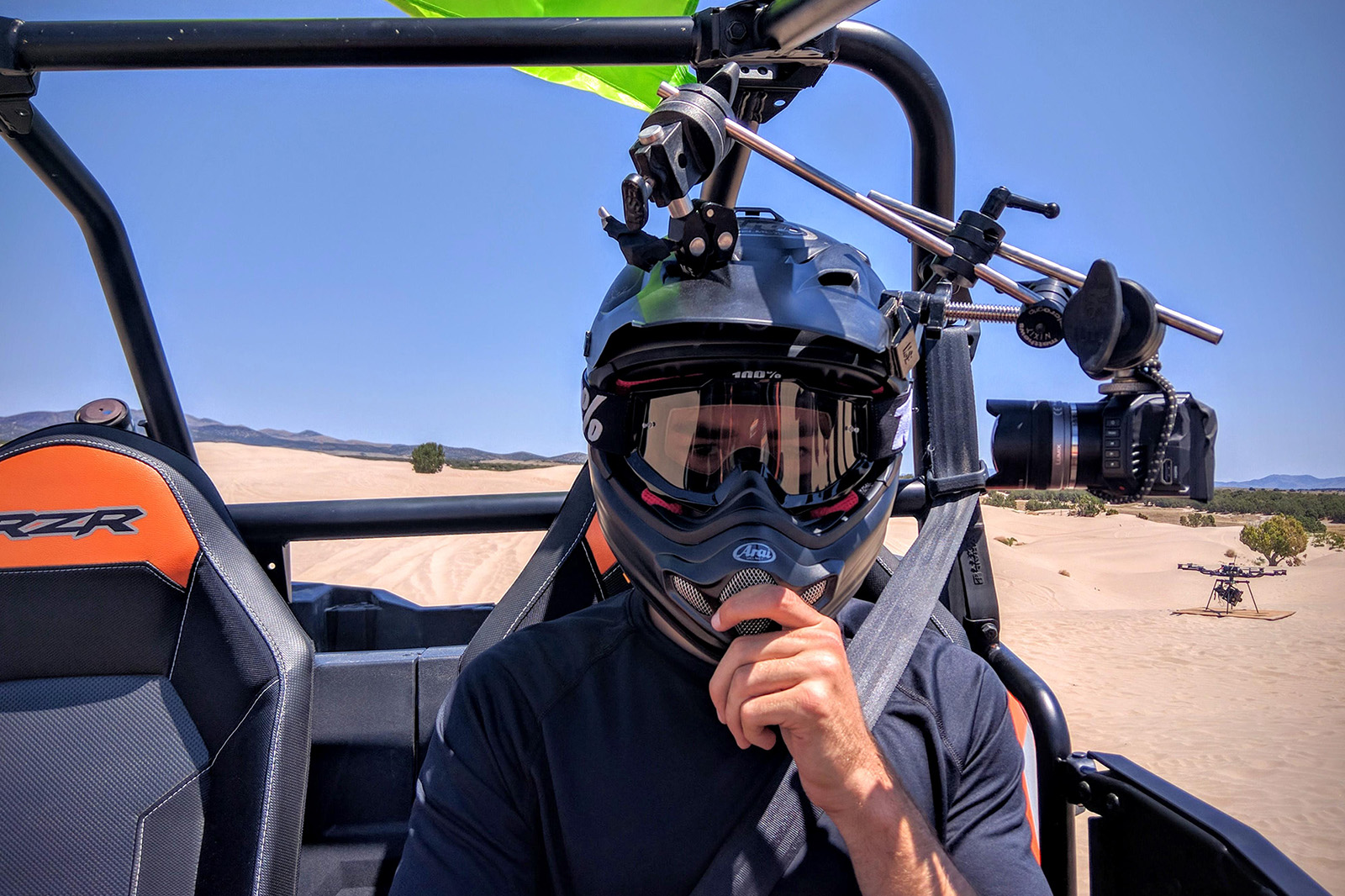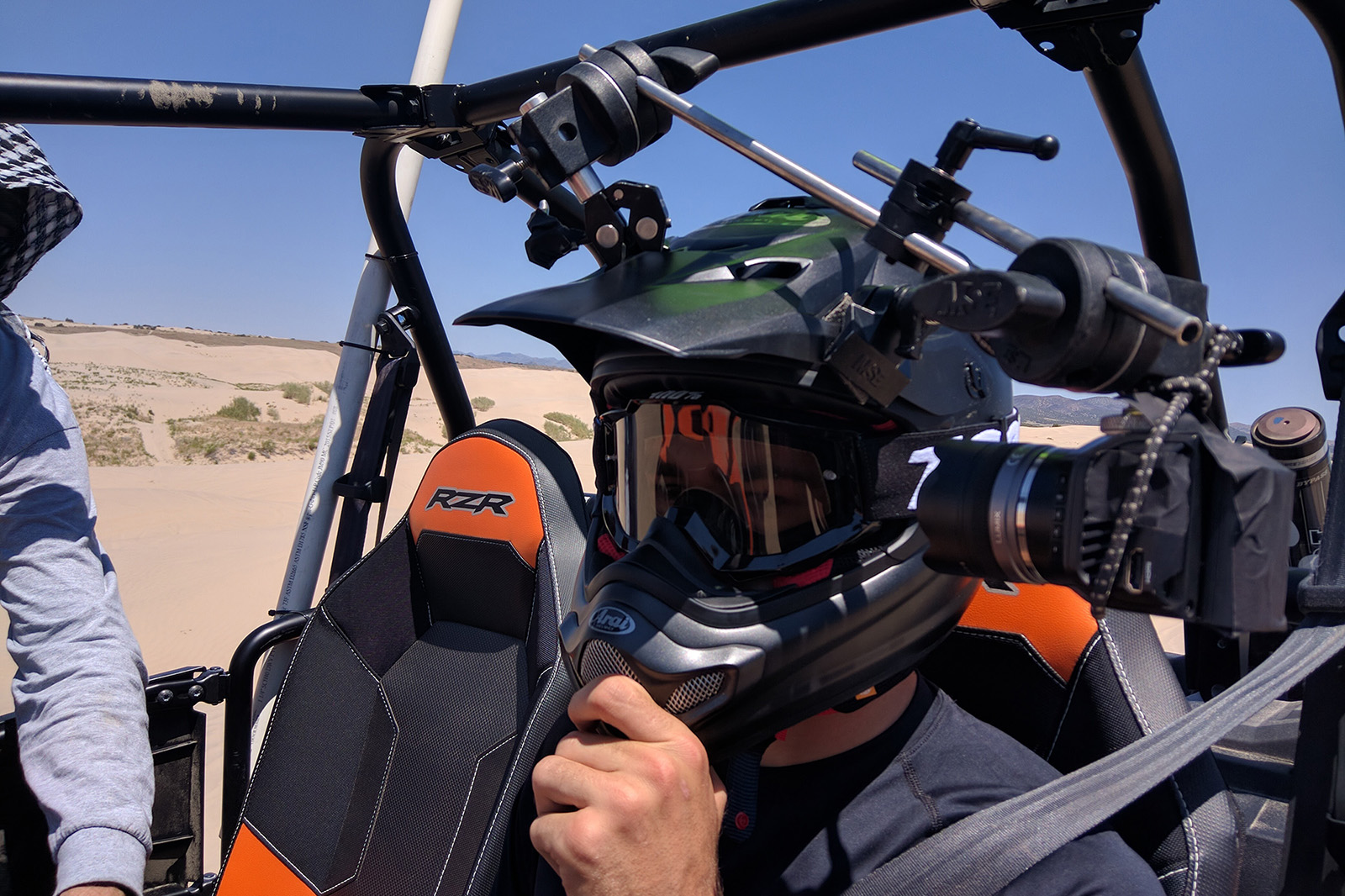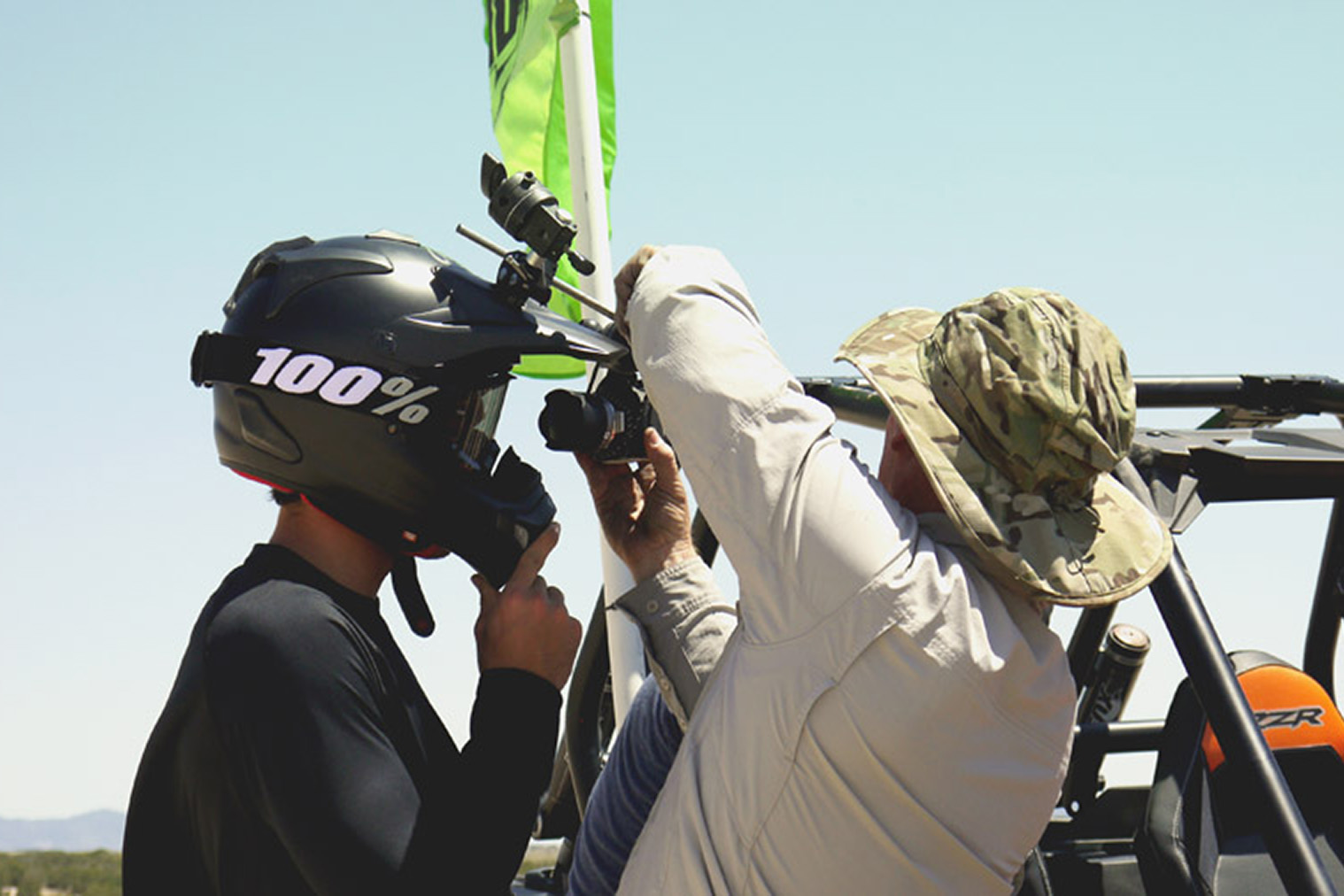The shoot, produced by Moniker Media, not only featured professional race car driver Chase Elliott, but was actually the driver’s idea as well. Elliott mapped out the course in the Little Sahara sand dunes in Utah for a traditional game of capture the flag with an untraditional racing twist.
To get shots of the game, the production crew used different arms and booms to adapt the cinema cameras to the point-of-view-style shoot, using first-person helmet angles as well as an arm extended off one dune buggy to capture the biggest jump in the shoot.
“We were able to get mounted shots of the dune buggies, the vehicles’ suspensions, hands shifting gears, as well as Rush-style eye close-ups through Chase’s helmet, mounted dirt bike shots, huge jumps off the dunes, and essentially most of the ‘dangerous’ angles,” said second unit director Casey Wilson.
While the interchangeable lens cameras are larger than a traditional action cameras, their smaller size over other systems allowed the production team’s ideas to be brought to life in a higher resolution. The crew used a variety of different lenses paired with the Black Magic cameras to capture both main and b-roll footage.
Wilson says the camera set-up was chosen for more than just the resolution and size. With the action style preventing full control of the lighting, the camera’s 13 stops of dynamic range helped get more from the shots in post, Wilson added.






